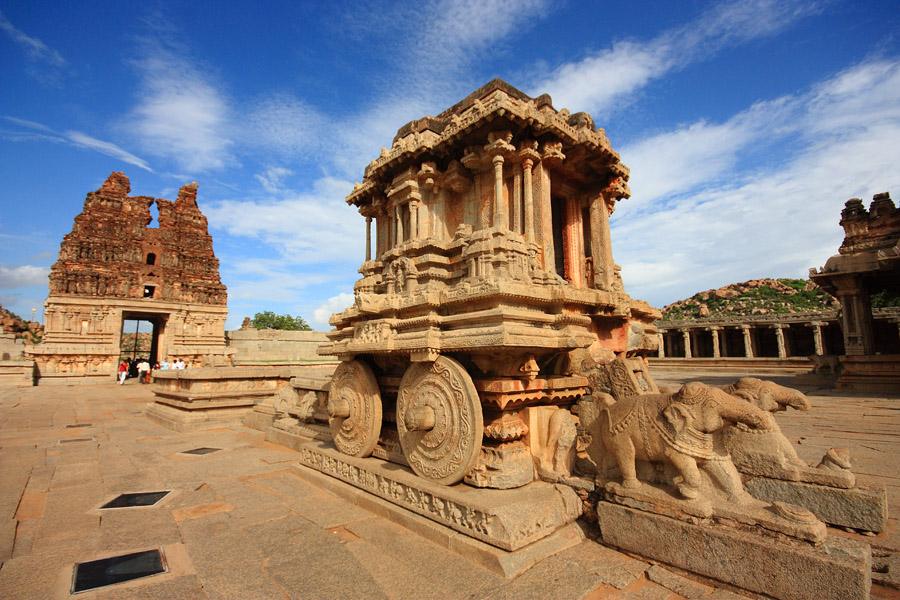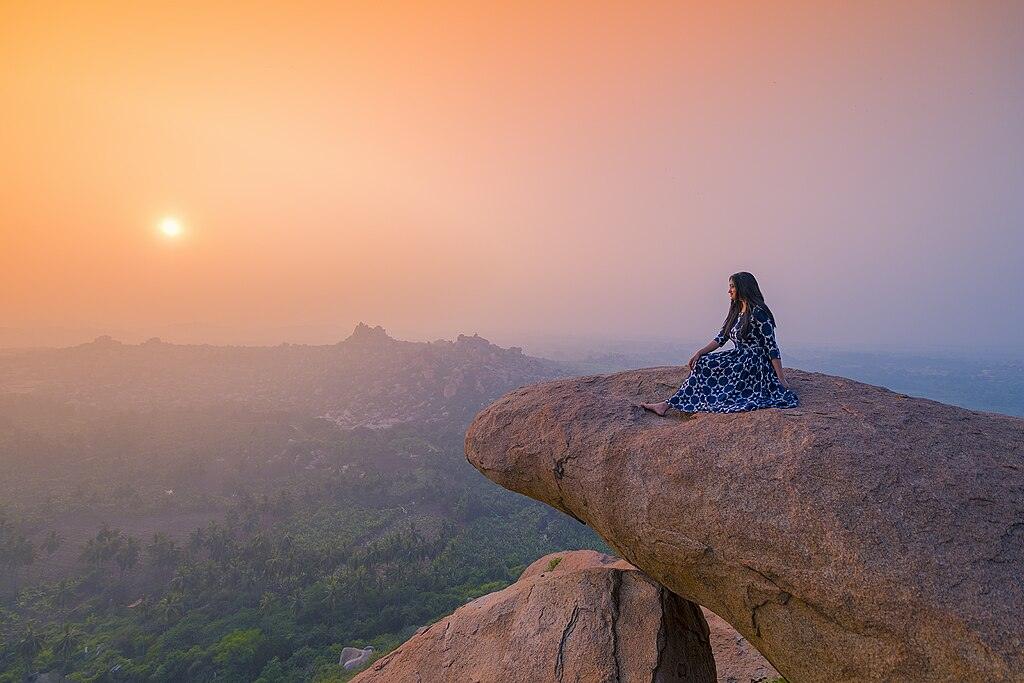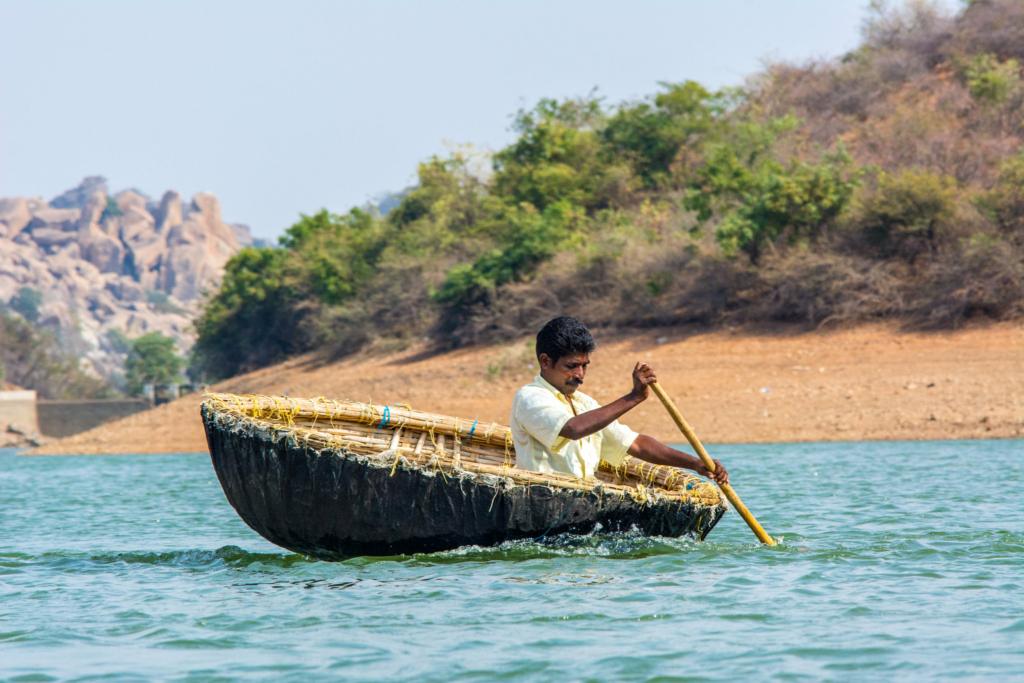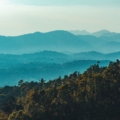Discover the Enchanting Ruins and Places to Visit in Hampi: A Two-Day Travel Guide

Perched along the banks of the Tungabhadra River in Karnataka, Hampi weaves a mesmerising tapestry of history and architectural splendour. As the former capital of the Vijayanagara Empire, this UNESCO World Heritage Site stands as a treasure trove of ancient ruins, stunning landscapes, and vibrant cultural experiences. Whether you’re a history buff, a culture enthusiast, or an adventure seeker, Places to visit in Hampi offers a journey back in time that will captivate your senses.
In this Blog
Day 1: Iconic Landmarks and Architectural Marvels
Morning Exploration: Virupaksha Temple
Kick off your exploration at the Virupaksha Temple, a magnificent structure dedicated to Lord Shiva. This temple, dating back to the 7th century, serves not only as a place of worship but also as a testament to the architectural ingenuity of the Vijayanagara Empire. As you wander through its intricate corridors and gaze upon the towering gopuram, you’ll be transported to a bygone era where spirituality and artistry coexisted harmoniously.
Midday Adventure: Hemakuta Hill and Vijaya Vittala Temple
Next, make your way to Hemakuta Hill, renowned for its panoramic views and a cluster of ancient temples scattered across its expanse. It’s a paradise for photography enthusiasts, with unique rock formations and temple ruins creating a stunning backdrop.
Then, continue to the Vijaya Vittala Temple, home to the iconic stone chariot that symbolises Hampi’s architectural genius. The temple’s complex carvings and musical pillars showcase the advanced artistry of the craftsmen of the Vijayanagara period. Spend time here soaking in the details and marvelling at the grandeur of this historical masterpiece.
Afternoon Delights: Queen’s Bath and Lotus Mahal
In the afternoon, visit the Queen’s Bath, an ornate bathing complex that offers a glimpse into the opulent lifestyle of the Vijayanagara royals. Its Indo-Islamic architecture captivates with intricate designs that speak of a sophisticated past.
Next, head to the Lotus Mahal, a stunning example of Indo-Islamic architecture that served as a zenana or royal enclosure. The Mahal’s lotus-like structure is both enchanting and serene, making it a must-see for anyone visiting Hampi.
Evening Tranquillity: Sunset at Matanga Hill
Conclude your day with a sunset view from Matanga Hill. Known for its breathtaking vistas, Matanga Hill is one of the best spots to witness the golden hues of the setting sun casting a magical glow over the ruins of Hampi. It’s a moment of tranquillity and reflection, perfect for ending a day of exploration.

Day 2: Cultural Discoveries and Unique Experiences
Morning Journey: Anjaneya Hill and Sanapur Lake
Start your day with a trek up Anjaneya Hill, believed to be the birthplace of Lord Hanuman. The climb rewards you with panoramic views of the surrounding landscapes and the Tungabhadra River. It’s a spiritual experience that connects you with the mythological essence of Hampi.
After your trek, unwind at Sanapur Lake, where you can enjoy a leisurely ride in a coracle. The peaceful waters and serene environment provide a perfect escape from bustling tourist spots.
Cultural Immersion: Anegundi Village and Hampi Art Labs
In the afternoon, immerse yourself in local culture with a visit to Anegundi Village. This charming village, older than Hampi itself, offers a glimpse into the traditional lifestyle of the region. Wander through its narrow lanes, interact with the locals, and soak in the rustic charm.
For art lovers, the Hampi Art Labs offer a unique experience. Engage with local artisans and witness the creation of traditional crafts. It’s an opportunity to appreciate the vibrant artistic heritage of Hampi and perhaps take home a handcrafted souvenir.
Evening Relaxation: Coracle Ride and Sunset at Hemakuta Hill
End your Hampi adventure with a sunset at Hemakuta Hill. Enjoy the tranquil beauty of the landscape as you reflect on your journey through history and culture. As the sun sets, casting its warm glow over the ancient ruins, you’ll find a sense of peace and fulfilment.

Everything You Need to Plan Your Hampi Adventure
Best Time to Visit
The ideal time to visit Hampi is between October and February, when the weather is pleasant and perfect for exploring the ruins.
How to Reach Hampi
- By Air: The nearest airport is in Hubli, about 144 km away. From there, you can hire a taxi or use public transport to reach Hampi.
- By Train: Hospet Junction is the closest railway station, approximately 13 km from Hampi. Frequent trains connect Hospet with major cities in Karnataka tourism.
Where to Stay
For a premium stay experience, consider handpicked properties that offer luxury accommodations with modern amenities while ensuring easy access to Hampi’s attractions. These options provide tailor-made experiences with personalised service, allowing you to enjoy privacy and comfort during your stay.
Explore Hampi with StayVista
Discover StayVista’s curated collection of premium accommodations:
Hampi Itinerary: Best Places to Visit, Stay & Experience in 2 Days
Places To Visit In Hampi Journal
From luxury villas to charming homestays, find your perfect getaway with StayVista.
Explore Places to Visit in Hampi Like Never Before
Hampi is not just a destination; it’s a journey through time that offers an unparalleled blend of history, culture, and natural beauty. As you explore its ancient ruins and engage with its vibrant culture, you’ll find yourself captivated by the stories etched in its stones. Whether you’re seeking a spiritual awakening, an artistic journey, or an adventure through history, Hampi promises an unforgettable experience.
FAQs
Top places include the Virupaksha Temple, Vijaya Vittala Temple, Hemakuta Hill, Queen’s Bath, Lotus Mahal, and Matanga Hill.
Exploring Hampi on foot or by bicycle allows you to fully appreciate its architectural wonders and scenic landscapes. Guided tours are available for deeper insights into the history and culture.
Yes, guided tours are available and recommended for those interested in detailed historical and cultural insights.
Banner image credits: Joel Godwin via Wikimedia Commons





